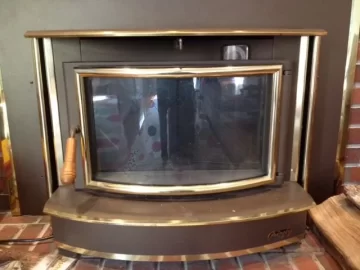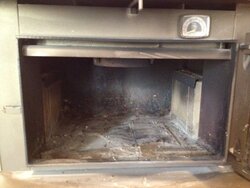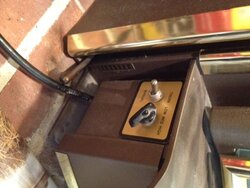Hi all,
We recently bought a house here in VA that has an old Derco Grizzly stove (from what I've gathered). This house was built in 1992 and the stove was installed a couple of years later. I have little to no clue about such stoves and was going to get it removed during a chimney clean last month but the guy talked me out of it.
One thing I failed to do was ask him how to operate one and I've tried to no avail to find a copy of a manual online. After having watch a couple of videos online, I decided to give the stove a swirl last night. Got it up to the point where I placed the first log in. Fire was burning good and I then proceeded to close the door. The fire immediately started to dim. I thought I had the side drafts open all the way but yet it started to dim. So I had to open the doors again and this time smoke started filling into the room. I know I did something wrong here but I think we could have done with better firewood too.
Question....what is the blower for? I noticed at the side it reads Thermal or Manual. We had it on then turned it off by switching to thermal but some time later it activated on its own.
I check the combustor and it looks to be in good form. I don't think the previous owner had used this stove often enough. And yes I did have the top/vent open. We had to keep the door open slightly and let it burn until it died out.
Will welcome any advice. Attached are some photos. Thanks!
Helm



We recently bought a house here in VA that has an old Derco Grizzly stove (from what I've gathered). This house was built in 1992 and the stove was installed a couple of years later. I have little to no clue about such stoves and was going to get it removed during a chimney clean last month but the guy talked me out of it.
One thing I failed to do was ask him how to operate one and I've tried to no avail to find a copy of a manual online. After having watch a couple of videos online, I decided to give the stove a swirl last night. Got it up to the point where I placed the first log in. Fire was burning good and I then proceeded to close the door. The fire immediately started to dim. I thought I had the side drafts open all the way but yet it started to dim. So I had to open the doors again and this time smoke started filling into the room. I know I did something wrong here but I think we could have done with better firewood too.
Question....what is the blower for? I noticed at the side it reads Thermal or Manual. We had it on then turned it off by switching to thermal but some time later it activated on its own.
I check the combustor and it looks to be in good form. I don't think the previous owner had used this stove often enough. And yes I did have the top/vent open. We had to keep the door open slightly and let it burn until it died out.
Will welcome any advice. Attached are some photos. Thanks!
Helm



Last edited by a moderator:

